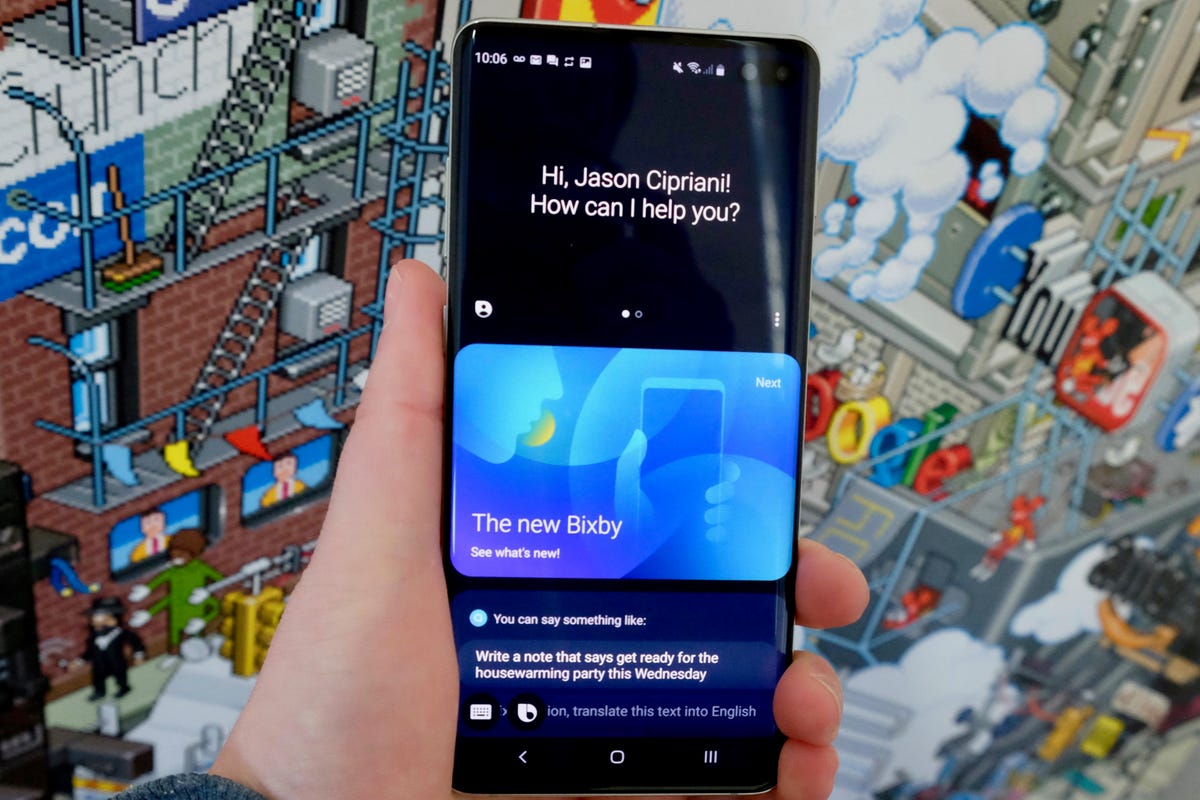Samsung is taking a page from the Google Pixel playbook with its upcoming One UI 5 software update, which will be adding a new way to take calls on Galaxy phones without needing your voice. The Bixby Text Call feature will bring the ability to answer a phone call by texting, with the Bixby assistant transcribing between voice and text on both ends.
The feature is only available in Korean to start, but it’s part of Samsung’s effort to make multitasking on Galaxy devices easier in the future — a theme it’s leaning into throughout One UI 5 to further differentiate its devices from Apple’s and Google’s. The company plans to expand into other languages, including English, next year.
Samsung isn’t the only one experimenting with ways to enhance the basic phone-calling experience. Google has rolled out a suite of new phone-centric features to Pixel devices that can screen calls on your behalf, wait on hold for you and even predict wait times when dialing toll-free numbers. Bixby Text Call is Samsung’s most prominent answer yet to Google’s ambitions to modernize phone calls.
“Bixby has evolved over many years as a specialized voice control agent,” Sally Jeong, vice president and head of the Framework Research and Development Group for Samsung’s Mobile Experience Business, said via a translator. “And it requires a lot of training of Bixby so that it can actually identify and understand the voices during phone calls.”
However, Samsung’s approach differs from Google’s. Rather than having Bixby take over a phone call, it assists with your call by transcribing between voice and text for situations where it might not be suitable to answer a phone call. It’s essentially blending texting and phone calls together.

Samsung’s Bixby, as seen here on the Galaxy S10, has had limited success compared to other virtual assistants like Alexa and Google Assistant.
Jason Cipriani/CNET
Part of why this feature is only launching now, roughly five years after Bixby’s debut, is because the technology has reached a point where it can accurately understand colloquial speech. Differentiating between speech being received through the phone’s microphone and the caller on the other end is another technical challenge that Samsung had to perfect before launching this feature.
“We have identified phone calls as the most effective or useful scenario for leveraging the technology,” Jeong said in reference to how Bixby’s speech recognition has progressed. “Because as you know, we all have experienced the pain points of having to leave the room to take an unexpected phone call.”
When using Bixby Text Call, you’ll be able to type a text message to answer an incoming call, which Bixby will then translate to speech for the caller on the other end. The caller will hear an automated message alerting them that the call is being answered through Bixby. After that, Bixby will translate the caller’s speech to text for the recipient. The feature works on-device, meaning it’s not sent to the cloud for processing, and the conversation transcript is saved in the Samsung call app. The audio itself is deleted right after the recognition process takes place, Samsung says.
Samsung sees an opportunity to further expand this technology in the future. Jeong said Samsung intends to eventually have Bixby screen for spam calls, similar to how the Google Assistant does this on Pixel phones in the US.
The Bixby spam filtering feature could be similar to the one seen on Pixel phones, which can intercept potential spam calls before they reach you.
Google
“Filtering spam calls will definitely be one direction that we’ll explore in addition to using your speech to turn it into text and vice versa,” Jeong said, although she couldn’t provide a timeline.
Samsung’s Bixby voice assistant launched in 2017, but it hasn’t gained as much traction as Apple’s Siri, the Google Assistant and Amazon Alexa. A 2020 report from Voicebot.ai examining voice assistant adoption among US adults found that Samsung’s Bixby only accounts for 6.7% of the phone-based voice assistant market, while Siri leads the pack at 45.1%. The Google Assistant was placed in second with 29.9%, while Amazon’s Alexa claimed 18.3%.
But Bixby usage has grown since 2018. That same report indicates that Samsung’s market share jumped from 4.7% in 2018 to 6.7% in 2020, while Apple and Google’s respective slices had slightly shrunk.
It remains to be seen whether features like Bixby Text Call will help bring Samsung’s digital helper up to speed with alternatives from Apple and Google. But what is clear is that Apple, Google and Samsung are using their virtual assistants in attempts to improve the phone-calling experience.
Google, for example, just updated its Direct My Call feature, which uses the Google Assistant to transcribe automated phone menus. With the Pixel 7, the Google Assistant will transcribe those menus before they’re spoken. Apple also added the ability to have Siri hang up a call hands-free and automatically send texts without requiring a confirmation in iOS 16.

